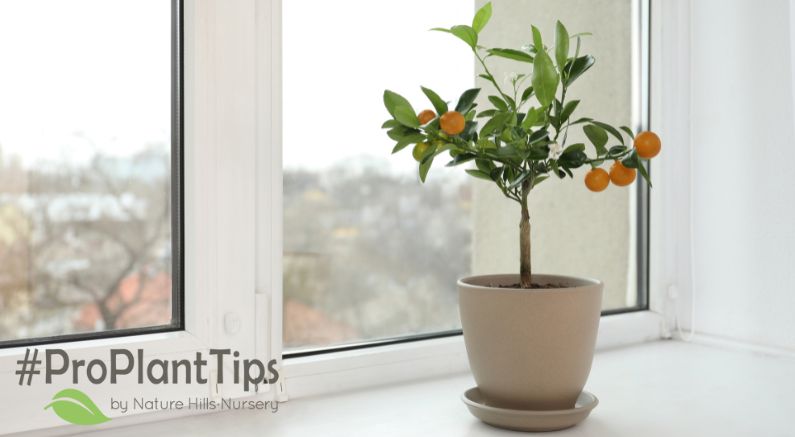This is the time of the year when all citrus grown in cold climates is brought indoors for winter protection. There are a few critical considerations that will allow your citrus plant to adapt to being indoors and stay healthy until it is put back outside in the spring.
The optimal place to over winter a citrus is in a greenhouse that is climate controlled. This is rarely available to the average homeowner. The process of bringing plants indoors should begin about 3 weeks before expected night-time temperatures reach 35 degrees or less. Citrus plants should be brought to a protected location that is well lit but not necessarily full sun. A location up against the house is ideal. A covered patio works well or just a wall that has good radiant heat coming from the house. The idea is to get the plant used to less light while offering some protection from the fluctuating fall temperatures.
A permanent location inside the house should be selected with some important considerations. First and most important is sunlight. The location should be one with the greatest amount of sun available. A southern or southwest facing window is most often your best choice. Plants should be exposed to as much sunlight as possible. This means that when placing more than one plant, it is recommended that they not be placed behind one another. For maximum light exposure, place plants above one another on the floor and table.
Sometimes optimal sunlight exposure is not available indoors and artificial light is required. There is still much research being done to determine what the best artificial light source for the hobbyist is. Keep in mind that citrus typically is ripening fruit during the fall and into the winter. In nature this is happening when the sunlight is at its lowest exposure. Because of the research at this point, the recommendations are more directed at what not to do. When artificial light is needed, full spectrum florescent lights are not recommended. Though great for light, to the plant they suggest spring or summer. This is confusing to a plant that has just come in from being exposed to the shorter day light of the fall. Currently recommended is a bulb designed for plant growing: a grow light. Even better, if an indoor gardening company is available, contact them concerning the latest light sources or bulbs recommended for fall/ winter growing and fruit ripening.
Also important is not placing the plant close to any heat source. The dry air inside the house is another factor that can cause problems with citrus plants. The biggest contributor to dry air will be around any heat sources. If possible, avoid placing citrus close to heater vents, radiators, fireplaces and wood stoves. Avoid placing citrus close to kitchen stoves and ovens as well.
Last and most important is the watering of your citrus. Fall and winter alone mean that the plant is using less water because it is not in a growing mode but rather a dormant or fruit ripening mode. The improper watering of citrus when indoors is the number 1 reason for defoliation while indoors. While indoors, citrus requires ¼ the amount of water they require during the spring and summer months. Become familiar with the moisture in the soil by pushing your finger in up to the knuckle and feeling the wetness. Citrus should be grown on the dry side during the winter time. A wet finger means wet soil.
The fact is that citrus does best when grown on the dry side anytime. The difference is that the spring and summer months are active growing and flowering periods. The longer days, the heat and the growth all require more frequent application of water - unlike what is need during the winter months.

